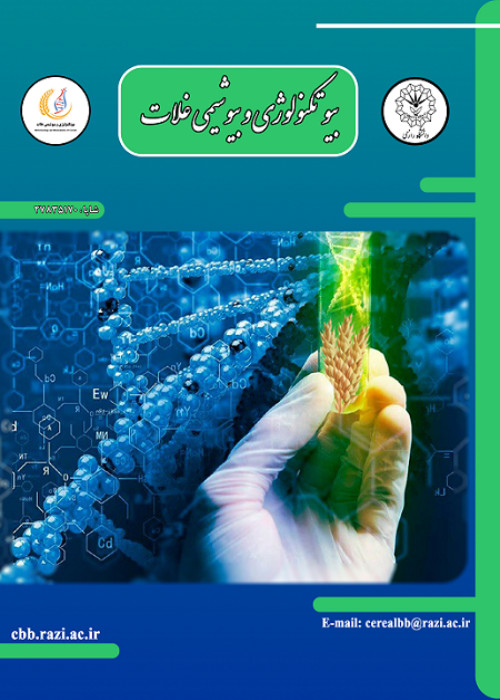Effect of selection on germplasm diversity of pure lines of crop sorghum in Iran using IRAP molecular markers and morphological traits
Humans have long sought to select the desirable traits for agriculture and domestication of important and economical crop species around the world. In fact, the human selection is a factor that plays a key role in determining the fate of plant breeding lines, especially cereals. Therefore, the study of genetic diversity and the study of germplasm storage of breeding lines on the one hand and the study of the role and effect of choices made by plant breeders, on the other hand, are key factors in investigating the fate of improved seeds and lines. To conduct such studies, molecular studies using markers that act neutrally and randomly are important. Accordingly, the present study aimed to investigate the effect of selection on seeds of an important crop that has long been under domestication and crop breeding programs. Sixteen pure lines of sorghum grown in the research farm of Agricultural and Natural Resources Research and Training Center of Khorasan Razavi were assessed using retrotransposon-based molecular markers plus desirable morphological traits used in breeding crop sorghums.
A total of 80 individuals belonging to the first to ninth generations of breeding sorghums were randomly selected, and molecular studies were performed using 8 IRAP primer combinations. Morphological studies were also performed using the measurement of traits related to leaf biomass (the number of leaves at 60 days of plant growth).
The observations showed relatively high intergroup genetic diversity (between breeding generations) (63.5%) in the study group. Among the studied generations, the fifth generation and afterward the seventh and eighth generations showed the highest hereditary diversity, the highest heterozygosity, and the highest number of unique alleles. The first and ninth generations with the highest homozygosity, respectively, were the purest lines studied.
The results of dendrogram trees also confirmed the existence of three completely different clusters in the study group. Accordingly, the existence of gene flow between the breeding lines of sorghum and its occurrence among the individuals of the fifth, sixth and seventh generations was confirmed. However, its decline and decrease in the seventh generation onwards indicated the instability of observed recombination. Finally, it was concluded that the selection of superior and desirable phenotypes during the purification process always acts as a selective sweep and as a directional selection eliminates the variations created by gene flow and thus reduces the genetic diversity in the pure lines of crop sorghum.
- حق عضویت دریافتی صرف حمایت از نشریات عضو و نگهداری، تکمیل و توسعه مگیران میشود.
- پرداخت حق اشتراک و دانلود مقالات اجازه بازنشر آن در سایر رسانههای چاپی و دیجیتال را به کاربر نمیدهد.


